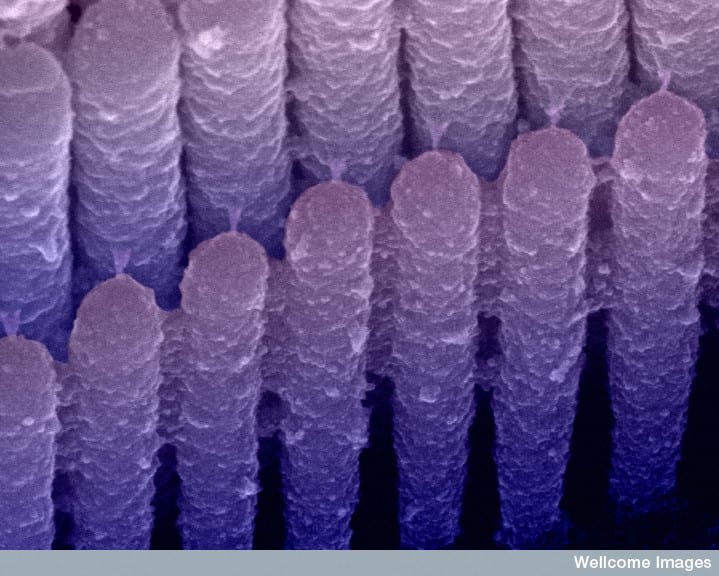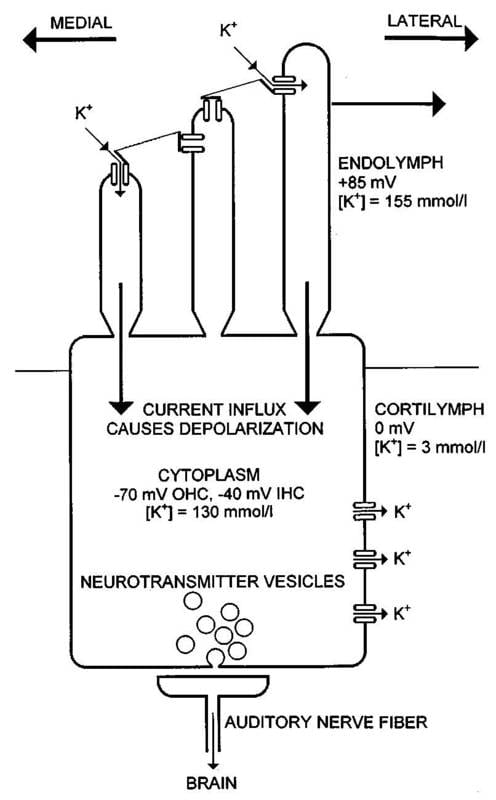Ion channels in inner-ear receptor cells switch electrical conductivity depending on lateral deflection of the sensors where they are located.
“In vertebrates, hair cells are found in all peripheral structures used in hearing and balance. They play the key role in the mechano-electrical transduction mechanism. Inner hair cells (IHC) and outer hair cells (OHC) are found in the mammalian cochlea. Figure 1 [available in Gallery] schematically illustrates a typical inner hair cell. The apical part of the cell including the hairs (stereocilia) enters the endolymphatic fluid, which is characterized by its high electrical potential and its high K+-ion concentration. The stereocilia of one hair cell are connected through tip links and lateral links. The transmembrane voltage of 270 mV for OHC and 240 mV for IHC is mainly caused by the K+-ion concentration gradient between cell body and cortilymph. Current influx that changes the receptor potential occurs mainly through the transduction channels of the stereocilia: stereociliary displacement to the lateral side of the cochlea causes an increase of transduction channel open probability and hence depolarization of the receptor potential, whereas stereociliary displacement to the medial side results in a decrease of the transduction channel open probability and hence hyperpolarization.” (Rattay et al. 1998:1558)




